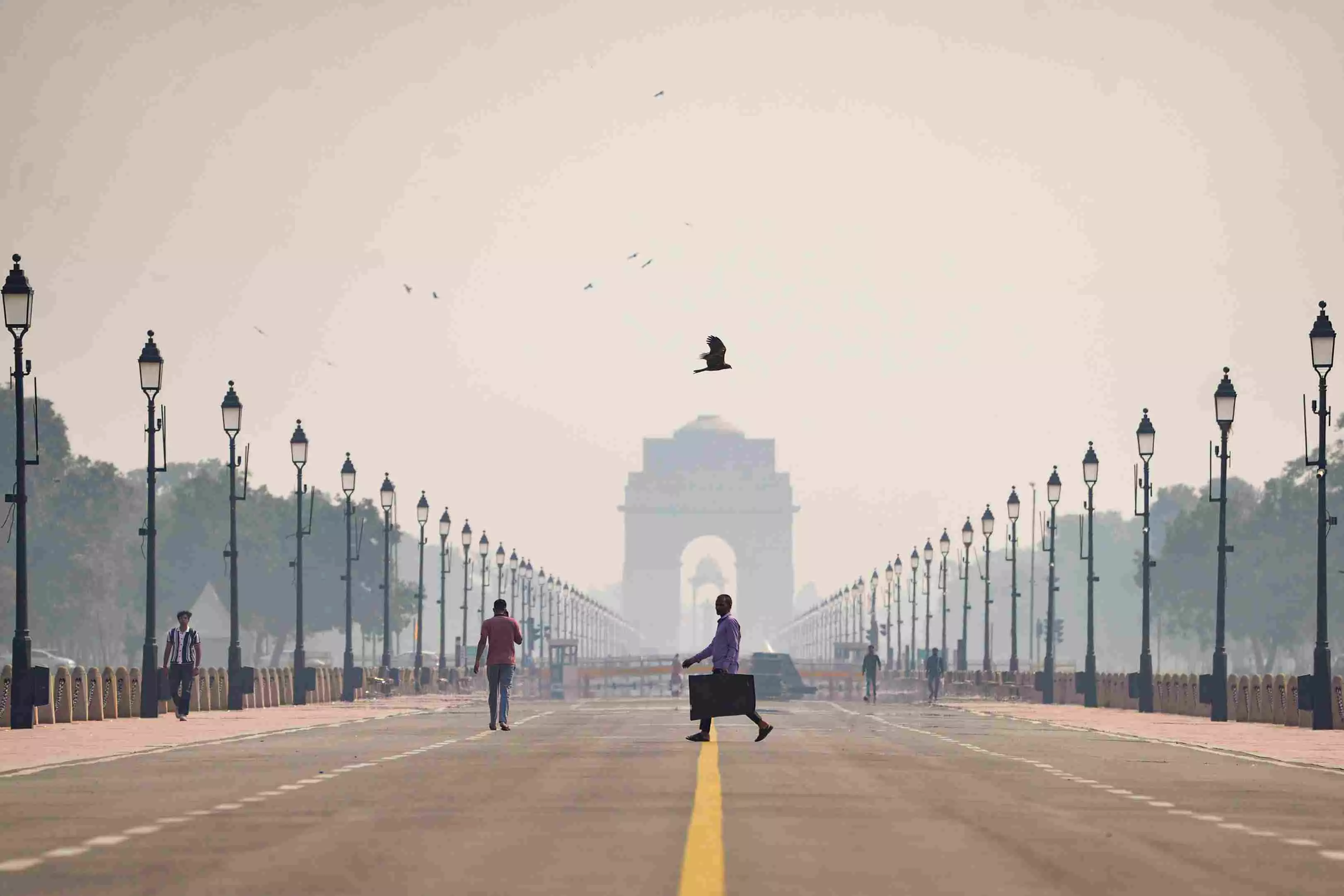
Delhi gasps for breath as AQI soars beyond 426 ahead of Diwali
In certain areas, air quality dropped with Akshardham recording an AQI of 426, categorised as severe, marking one of the highest pollution levels in Delhi

For the residents of Delhi, the sparkle and colourful festivities of Diwali, is accompanied with fear and dread over the rising levels of air pollution.
And, this year too, the capital appears to be gasping under a blanket of toxic air, with pollution levels in some areas surging past the 400 AQI mark— which falls under the "severe" category.
Air quality dips
On Sunday (October 19), for the sixth consecutive day, Delhi's air quality continued to deteriorate with several areas reporting Air Quality Index (AQI) readings in the 'poor and 'very poor' categories. Overall, the city hovered in the 'poor' category for the sixth consecutive day.
According to the Central Pollution Control Board (CPCB), the city recorded an air quality Index (AQI) of 274 at 5.30 am on Sunday, placing the capital in the 'poor' category.
AQI drops to 'severe'
In certain areas, however, air quality dropped further with Akshardham area recording an AQI of 426 – categorised as 'severe' – marking one of the highest pollution levels in the city this season.
CPCB data further showed that Anand Vihar area followed closed behind with an AQI of 418, also classified as 'severe'. Barapulla registered an AQI of 290 on Sunday morning, falling under the 'poor' category. Wazirpur at 351, Jahangirpuri 310, and Dwarka 310 were among the worst-affected.
Also read: Delhi mandates anti-smog guns for high-rises, hotels, commercial complexes
While RK Puram at 322 and Vivek Vihar at 349 remained in 'very poor' category.
By 4 pm on Saturday, out of 38 stations in Delhi, nine reported 'very poor' air, inching towards 'severe' levels.
NCR region fares no better
In the National Capital Region, pollution levels showed a similar pattern.
Loni (Ghaziabad) recorded a very poor AQI of 341, Sector 125 (Noida) stood at 342, and Sector 51 (Gurugram) also registered 342, all falling in the “very poor” category.
According to the CPCB, an AQI reading between 0 and 50 is considered good, 51 to 100 is satisfactory, 101 to 200 falls under the moderate category, 201 to 300 is poor, 301 to 400 is very poor, and 401 to 500 is classified as severe.
Vehicular emissions
These figures underscore the growing environmental concern as the city prepares for Diwali, a festival often linked to a spike in pollution due to firecracker use and increased vehicular activity. According to the Decision Support System, vehicular emissions is the city's primary source of pollution on Saturday, accounting for 15.6 per cent of total emissions.
Also read: Top 10 most polluted Indian cities: Byrnihat tops, Delhi second
Experts have cautioned that a combination of vehicular emissions, festive firecracker use, and stubble burning may drive air quality into the 'severe' category in the coming days.
Water sprinklers were used at the India Gate area in order to control the rising pollution levels. The area recorded an AQI of 269 on Sunday morning.
Also, the Air Quality Early Warning System has predicted that pollution levels will likely stay within the 'poor to very poor' category in the days leading up to Diwali. In response, authorities are advising residents to minimise outdoor exposure and refrain from using firecrackers during the festivities to help prevent a further deterioration in air quality.
Unchanged weather conditions
Meanwhile, the weather conditions in Delhi remain largely unchanged, offering minimal relief from the accumulating pollution.
On Saturday, the city recorded a maximum temperature of 33.5°C, which is 0.9°C above the seasonal average, while the minimum temperature settled at 19.6°C.
According to the India Meteorological Department (IMD), clear skies are expected on Sunday, with temperatures likely to range between 19°C and 33°C.

